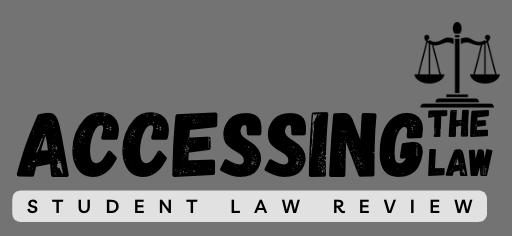Corporate Law: Boeing and Alaska Airlines Class Action
Written by Anna Ramesh, Aqsa Babar, and Sophia Liu
Edited by Anna Ramesh
Background
On January 5, 2024, Alaska Airlines Flight 1282, a Boeing 737 MAX 9 aircraft, experienced a sudden cabin depressurization after a door plug detached mid-flight. The aircraft, which was en route to Ontario, California from Portland, Oregon, returned safely to Portland International Airport. Fortunately, no serious physical injuries were reported among the passengers. However, passengers reported experiencing significant emotional trauma and distress.
This case is significant because the Boeing 737 MAX 9 has a history of safety concerns, with the entire MAX series being grounded globally in 2019 after two fatal crashes involving the MAX 8 model. Despite extensive modifications and recertification, the incident involving Flight 1282 has raised renewed concerns about Boeing's manufacturing standards and quality control.
Alaska Airlines operated Flight 1282. Following the incident, the airline cooperated with investigations and faced legal actions from passengers, alleging negligence in ensuring aircraft safety.
Passengers on Flight 1282 reported physical and emotional distress due to the sudden depressurization. In response, several passengers initiated legal proceedings against Boeing and Alaska Airlines, claiming negligence and seeking damages for the trauma experienced.
The attorney, Mark Lindquist, who filed the lawsuit against Boeing and Alaska Airlines on behalf of 22 passengers on Alaska Airlines Flight 1282, said of the situation,"Boeing is still cutting corners on quality…The company is cutting so many corners, they're going in circles." Lindquist had initially filed a lawsuit on January 16 alleging emotional and physical injuries to passengers, including severe stress, anxiety, trauma, and hearing damage.
However, new evidence has been found, and the suit now has an Amended Complaint, which added new passengers and new allegations of negligence by Boeing and Alaska Airlines. Lindquit mainly cites the most recent National Transportation Safety Board (NTSB) preliminary report, which found a number of deficiencies in communication to pilots and crew and of Boeing cutting corners in quality. According to the report, the NTSB found that Boeing delivered the plane to Alaska Airlines with four retaining bolts missing, which resulted in the eventual door plug blowout.
New allegations include a claim, "there was a whistling sound coming from the vicinity of the door plug on a previous flight of the subject plane. Passengers apparently noticed the whistling sound and brought it to the attention of flight attendants who reportedly informed the pilot or first officer."
A class action lawsuit is a type of legal proceeding where a group of people collectively brings a claim to court, typically when they have suffered similar injuries or damages from the same defendant's actions. In this case, passengers of Flight 1282 filed a class action against Boeing and Alaska Airlines, alleging that manufacturing defects and inadequate maintenance led to the door plug detachment and subsequent depressurization. The lawsuit seeks compensation for the passengers' physical and emotional injuries and aims to hold Boeing and Alaska Airlines accountable for ensuring passenger safety.
What are the plaintiffs alleging
On January 11th, 2023, Attorney Mark Lindquist filed a lawsuit on behalf of 22 plaintiffs who were passengers on flight 1282, seeking accountability and compensation for the traumatic experience they endured. The plaintiffs allege that the aircraft was defective in manufacturing, and was not product checked or maintained properly by Boeing. The lawsuit also claims that the left mid-exit door plug, made by Spirit AeroSystems, was defective, causing it to separate from the aircraft mid-flight. This accident was caused by the plug missing bolts essential for securing the door plug to the fuselage. Furthermore, the lawsuits allege that both Boeing and Alaska Airlines failed in their duty to ensure passenger safety.
Specifically, Boeing is accused of negligent manufacturing practices, including inadequate quality control measures that led to the omission of critical bolts during assembly. Along with the alleged inattention to detail on Boeing's end, Alaska Airlines is alleged to have been negligent in operating an aircraft that had prior pressurization alerts, suggesting a failure to adequately address known maintenance issues before the flight.
Many passengers claim to have felt great emotional distress while the accident occurred, citing feelings of intense anxiety and fear, followed by trauma after the event. Numerous travelers also felt that they were faced with imminent death, and sought to receive compensation for the severe emotional distress that they felt. Currently, the lawsuit is ongoing, citing the negligence of the build and maintenance of the aircraft, and the subsequent physical and emotional damage, and a breach of common carrier's duty.
How does this affect airlines
The Department of Justice has convened a grand jury in response to this accident. A grand jury decides if a court case should go to trial by assessing evidence provided by the prosecution. If there is enough evidence to determine probable cause, the case will go to trial.
The Federal Aviation Administration is conducting an investigation into systemic production-quality issues at Boeing. As of today, the FAA has ongoing surveillance and review of Boeing's progress in addressing issues raised in an audit of the company. Every new Boeing 737 Max requires a certificate by the FAA to determine airworthiness.
Through this lawsuit, airlines now receive more public attention about accidents and other issues raised by customers, This increased public focus on airlines, as well as new regulations by the FAA have resulted in other competing airlines putting out statements against Boeing, calling for higher standards for the manufacturing company to meet before finishing production and quality checks on airplanes.
Works Cited
"Boeing must face shareholder class action following MAX 9 blowout2025. " 2025. Reuters. Accessed April 15. https://www.reuters.com/legal/boeing-must-face-shareholder-class-action-following-max-9-blowout-2025-03-08/.
"DOJ convenes Grand Jury for Criminal Investigation Into Boeing Blowout" Bloomberg. Accessed April 3 https://www.bloomberg.com/news/articles/2024-03-11/doj-convenes-grand-jury-for-boeing-criminal-probe?embedded-checkout=true
"F.A.A. Orders Airlines to Ground Some Boeing 737 Max 9 Jets After Midair 'Incident' ." 2024. The New York Times. Accessed April 3. https://www.nytimes.com/2024/01/05/business/alaska-airlines-flight-portland-landing.html
Firm, The Stritmatter. 2024. "Passengers of Alaska Airlines Flight 1282 File Class Action Lawsuit Against Boeing." Stritmatter Kessler Koehler Moore. July 29. https://www.stritmatter.com/passengers-of-alaska-airlines-flight-1282-file-class-action-lawsuit-against-boeing/.
